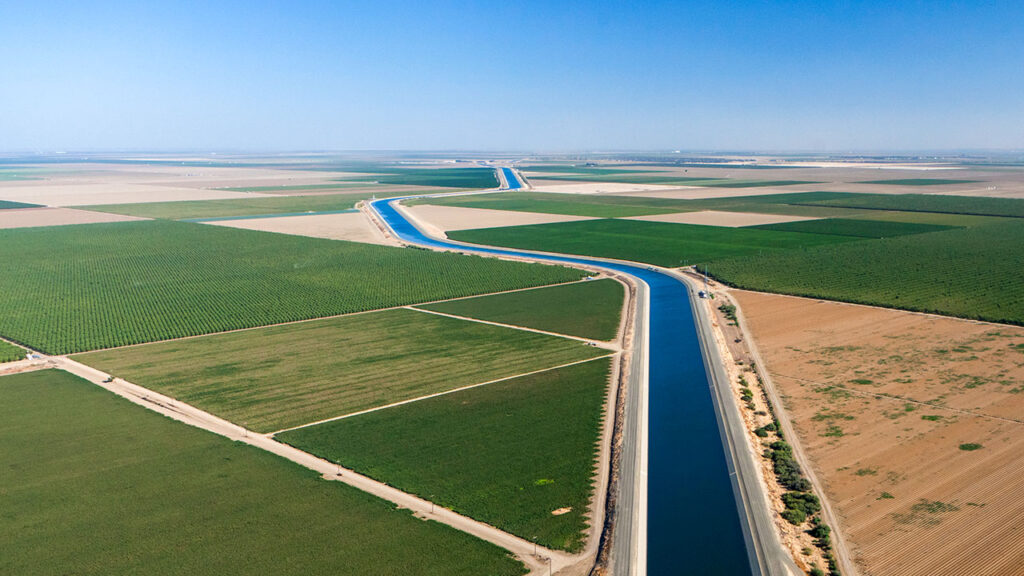Groundwater

For all the terribleness that is the New York Times, when they allow journalists to do real reporting, it can still be quite good. Over the last couple of months, the paper has done an excellent series on American agriculture going through the nation’s groundwater supplies like there’s no tomorrow, which soon enough might be literal given the rate of depletion. It doesn’t have to be that way though. Here’s one of the latest pieces, on innovations in groundwater usage in California, such as actually making farmers pay for the water they use (imagine!).
The strawberry, blackberry and raspberry fields of the Pajaro Valley stretch for 10 miles along the coast of California’s Monterey Bay, jeweled with fruit from April through early December. The valley’s 30,000 acres of farmland are also ruffled with emerald lettuces, brussels sprouts and varieties of kale, bringing in roughly $1 billion in revenue to the region each year.
All that abundance doesn’t come cheap.
While American farmers elsewhere have watered their crops by freely pumping the groundwater beneath their land, growers in Pajaro must pay hefty fees for irrigation water — making it one of the most expensive places to grow food in the country, if not the world. The cost: Up to $400 per acre-foot, a standard measurement equal to water covering one acre, one foot deep. The fees bring in $12 million a year, which is used to recycle, restore and conserve the region’s groundwater.
The Pajaro Valley’s unusual system — essentially a tax on water — was born of a berry-growing disaster some 40 years ago that forced farmers to act. Today, as the nation faces a spreading crisis of dwindling groundwater, stemming from a combination of climate change, agricultural overpumping and other issues, some experts say the Pajaro Valley is a case study in how to save the vital resource.
“What they are doing is cutting edge,” said Felicia Marcus, a former chair of the California State Water Resources Control Board and now a fellow at Stanford University’s Water in the West Program. While a few other regions have imposed fees on groundwater for farming, Pajaro Valley has been one of the most aggressive and effective. “They are way ahead of the curve,” she said.
Experts from as far away as China and Egypt are traveling to the valley to study the system. But replicating it elsewhere could face major challenges. For one thing, “People don’t like taxes,” said Nicholas Brozovic, an agricultural economist at the University of Nebraska. “There’s nothing mysterious about that.”
New research on the program revealed a direct connection between paying for the groundwater and conserving it: A 20 percent increase in the price of groundwater has resulted in a 20 percent decrease in the extraction of groundwater.
This is my favorite part.
Soren Bjorn, Driscoll’s chief executive, said in an interview that he “absolutely” sees the region as a model of water pricing that could be replicated in water-stressed regions from Texas to Portugal. “Water can’t be free anywhere, because you can’t run a sustainable water supply without pricing it,” he said. “That would apply to the globe.”
Yet, if the Pajaro Valley experiment were to be replicated across the country, it could trigger changes across the economy that affect both farmers and shoppers, resulting in higher prices at the grocery store while forcing farmers to abandon low-cost commodity crops that are needed for animal feed and other purposes, such as textiles.
In the years since the price on water was imposed, growers of those crops either shifted to high-priced berries and lettuces, or simply left the region for cheaper pastures.
“There’s a big public-policy argument for pricing groundwater,” said Louis Preonas, an agricultural economist at the University of Maryland. “But if you were to try something like this across the country, it would mean farmers would shift away from growing crops like corn, or leave agriculture altogether. Any way you cut it, it would likely raise food prices. But the alternative is running out of water.”
You mean using water for actual food produced in a relatively sustainable and productive way, as opposed to the gargantuan resources that go into cattle feed and all the other bullshit products we use corn for could also happen? Whoa.
